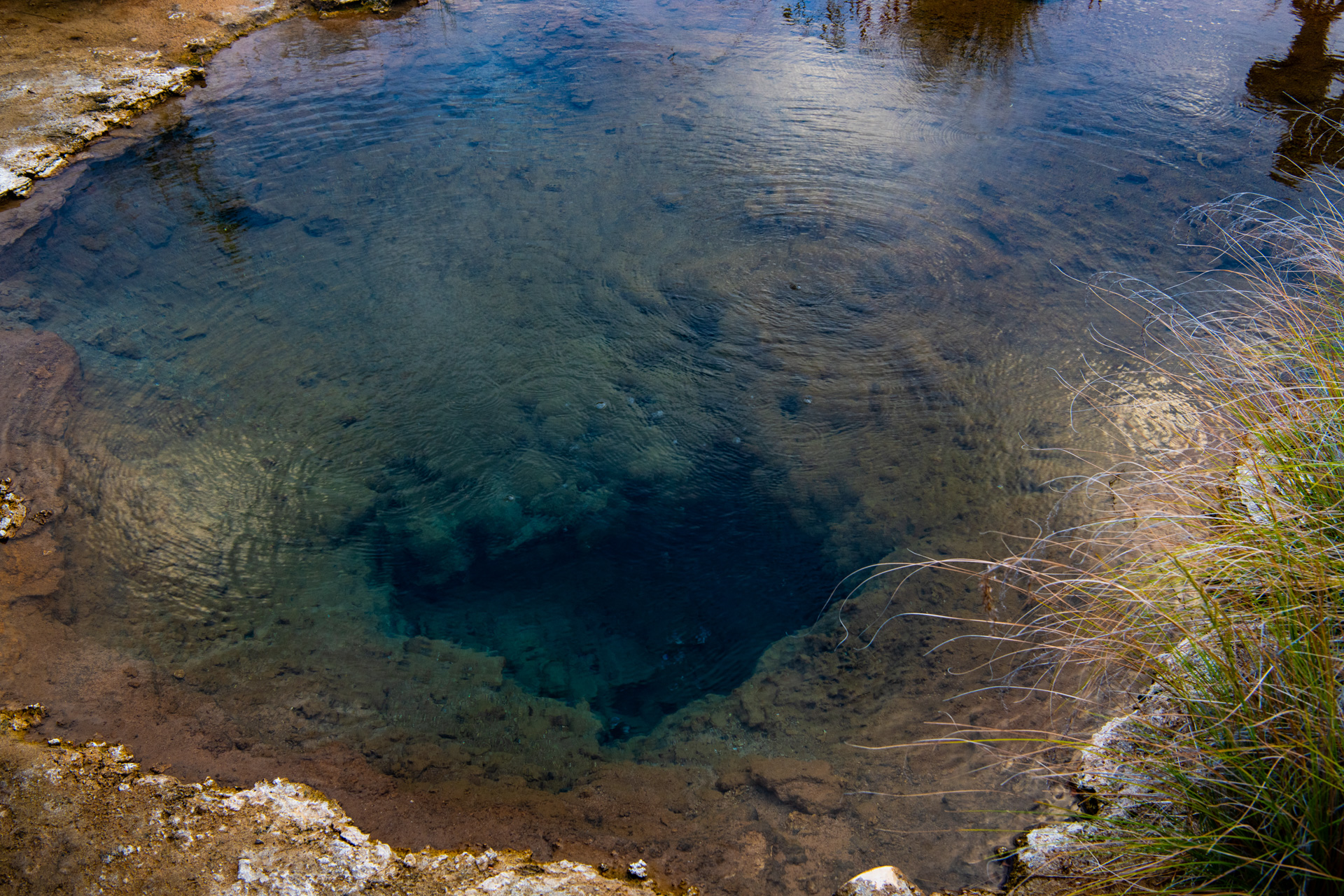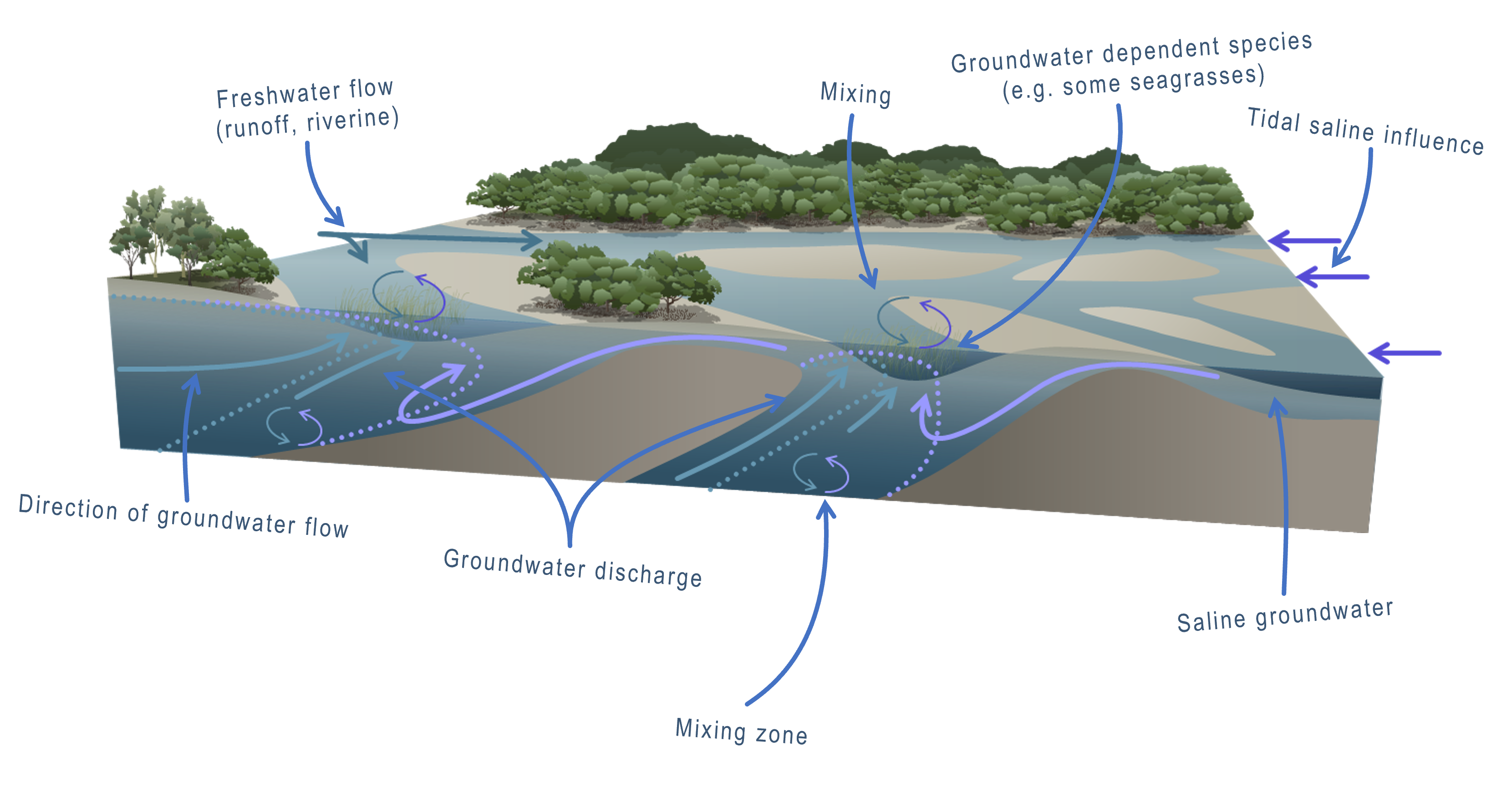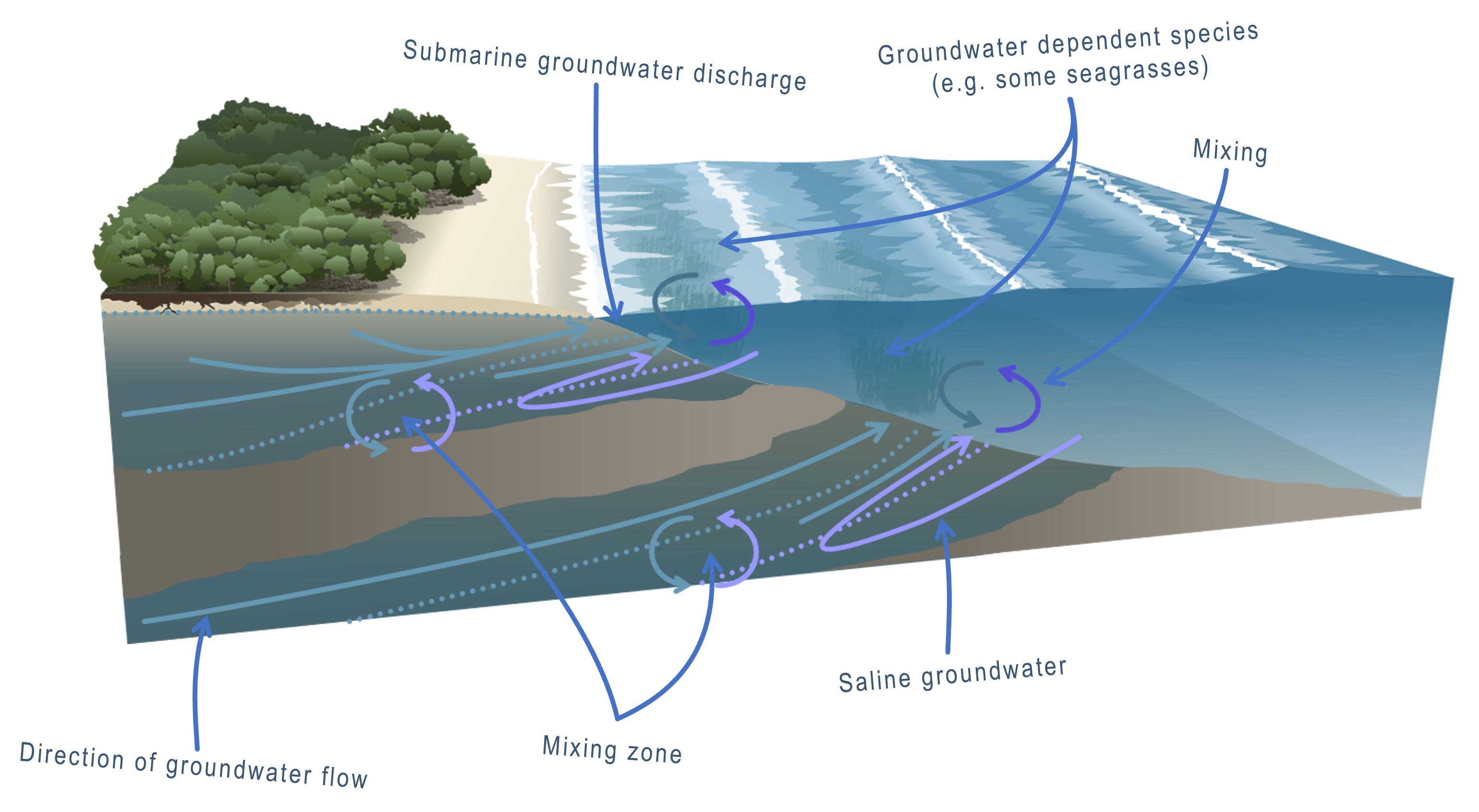|
|
Groundwater dischargeGroundwater discharge is the outflux of water from the saturated[2] and capillary zones, and from caves. It is affected by the climatic (e.g. temperature, pressure, precipitation), hydrological, geological, oceanographic and anthropogenic (e.g. irrigation, extraction) processes.
Groundwater discharge in wetlandsGroundwater can discharge from saturated underground areas (aquifers and caves) and the capillary zone in two ways: (1) discharge to the land surface or sea, or (2) uptake via plant roots. This process is part of the water cycle. Groundwater discharges for a number of reasons which include (1) pressure differentials between the recharge areas and the discharge areas, (2) groundwater coming into contact with an impervious layer and discharging at the contact zone, and (3) rising groundwater coming into contact with the surface. Freshwater wetlands in the coastal zone may be interconnected with estuarine and marine ecosystems via submarine groundwater discharge (SGD). Groundwater discharges to the seabed in several ways (1) via tidal pumping in the intertidal zone of the open coast and estuaries[5] (2) infiltration to the surface from submarine springs on the sea floor, termed ‘wonky holes’[5] (3) through permeable coastal aquifers such as sand systems or basalt. ‘Subterranean estuaries’ is the term for the mixing zone between fresh and saline estuarine water due to dilution from groundwater rather than surface water. Groundwater connections in coastal estuarine and marine wetlands influence water quality, ecology and biogeochemical cycles[3][5]. Animal burrows enhance the circulation of groundwater in mangrove and saltmarsh sediments. Estuarine and marine groundwater-dependent ecosystems include saltmarsh, mangroves, seagrass meadows, coral and rocky reefs and the estuaries themselves[1].
Groundwater discharge to the land surface or sea may occur within wetlands and may be temporally and spatially variable. For example, groundwater may discharge to wetlands on a permanent or intermittent basis. This groundwater supports forms part of the wetlands hydrological regime, including contributing to permanence, residence time and extent. In rivers, groundwater discharge is often referred to as ‘baseflow’. Seasonal rainfall patterns influence groundwater discharge to the sea days to months after major rainfall events, thus groundwater discharge is vulnerable to climate change related drying[1]. In addition, groundwater discharge can lead to the persistence of wetlands in the landscape during periods of drought[5]. Groundwater discharge may support the presence of different (and in some cases unique) composition of flora and/or fauna species, especially where (1) discharge is consistent, and (2) where other water sources are restricted. Groundwater Dependent Ecosystems (GDE’s) are dependent on this groundwater discharge and are critically important terrestrial and aquatic ecosystems. Many GDE’s have been mapped and their characteristics classified in Queensland. Spring wetlands are a form of GDE and occur in places where groundwater discharges to the surface at a point. They exist in many parts of Queensland[4] and include the iconic Great Artesian Basin springs. Variability in groundwater systems may be due to human modifications. Estuarine canal estates modify groundwater processes of the sand systems the have replaced by increasing tidal pumping through additional channels. Groundwater also plays a role in the nutrient cycle and may provide wetlands with a source of trace elements and nutrients. Links and referencesReferences
Last updated: 19 October 2023 This page should be cited as: Department of Environment, Science and Innovation, Queensland (2023) Groundwater discharge, WetlandInfo website, accessed 8 May 2025. Available at: https://wetlandinfo.des.qld.gov.au/wetlands/ecology/processes-systems/groundwater-discharge/ |

 — Department of the Environment, Tourism, Science and Innovation
— Department of the Environment, Tourism, Science and Innovation




